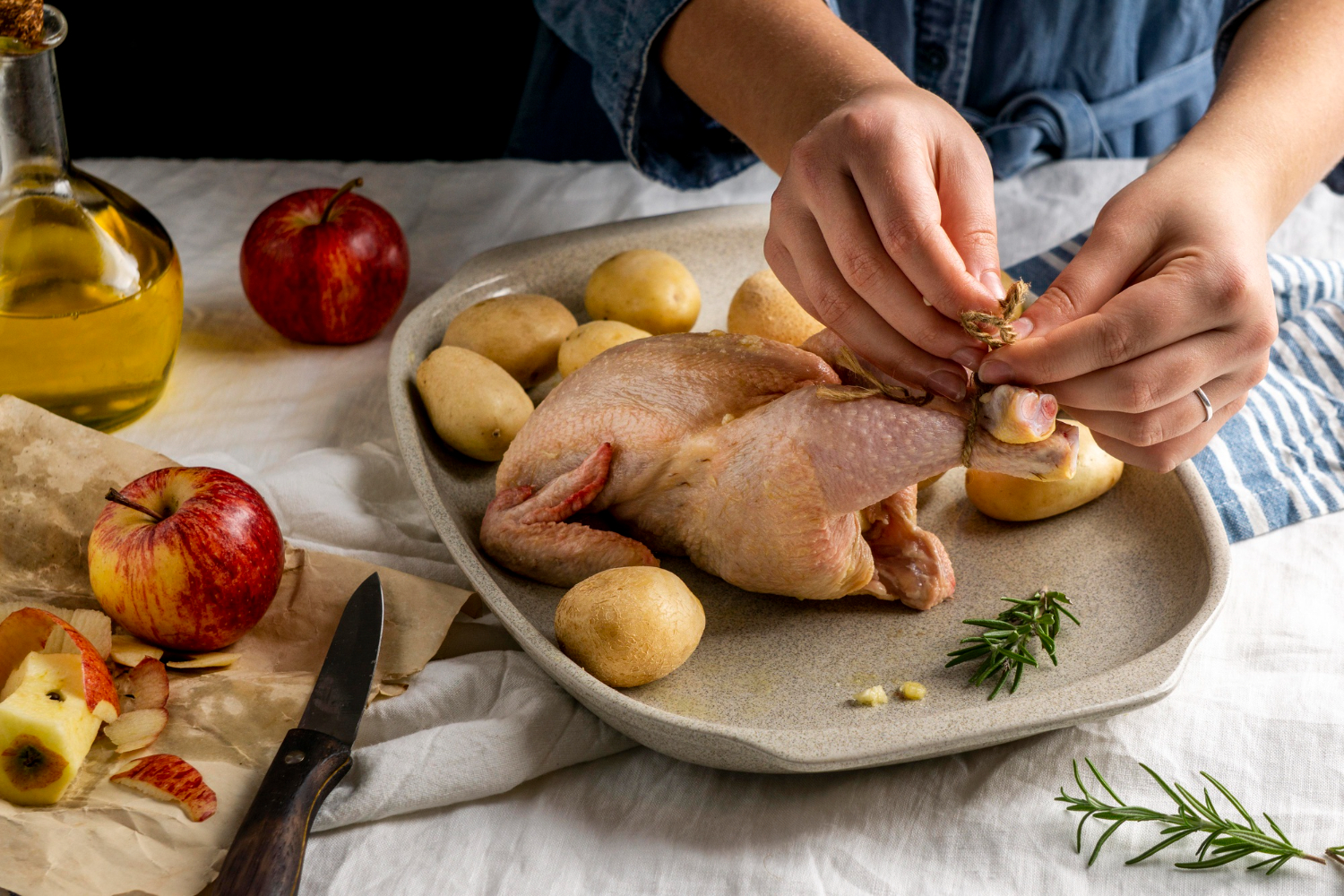
Fast Facts
Chicken is rich in protein, magnesium, selenium, and iron
Poaching, steaming, boiling, pressure cooking, and roasting are the healthiest cooking methods
High-heat methods like frying and grilling can produce harmful carcinogens
Safe handling and cooking practices are essential to prevent food poisoning
Aim for an internal cooking temperature of 165°F for chicken.
Chicken is a rich source of protein and essential nutrients such as magnesium, selenium, and iron. Including lean, unprocessed chicken, like chicken breast, in your diet can support weight management and reduce risk factors associated with diabetes and heart disease. However, the method of cooking chicken significantly affects its health benefits.
High-heat cooking methods, such as frying and grilling, can increase exposure to carcinogens like heterocyclic aromatic amines (HCAs) and polycyclic aromatic hydrocarbons (PAHs). To enjoy chicken’s health benefits, use lower heat cooking methods, avoid direct exposure to open flames, and minimize cooking times to reduce these chemicals.
Here are five of the healthiest ways to cook chicken:
1. Poaching
Poaching involves gently simmering chicken in liquid, such as broth or water, at low temperatures (158-176°F). This method produces fewer HCAs compared to high-heat methods like grilling and frying. Poaching retains the chicken’s moisture and tenderness, making it juicy and tender. This method is relatively quick, taking only 10-15 minutes.
How to Poach Chicken
- Add chicken breast or thighs, herbs, spices, and salt to a pot.
- Add enough broth or water to cover the chicken by about one inch.
- Heat over medium until the liquid gently simmers.
- When the liquid reaches 158-176°F, reduce the heat to low.
- Cover with a lid and cook for 10-15 minutes.
- Remove from heat and let the chicken continue poaching until the internal temperature reaches 165°F.
2. Steaming
Steaming uses boiling water vapor to cook chicken, retaining its tenderness, moisture, and flavor. Steaming at low temperatures (around 212°F) generates lower levels of HCAs and PAHs. It is also low in calories since no additional fat is required.
How to Steam Chicken
- Use chicken pieces or cut large pieces into smaller ones for even cooking.
- Season with marinade, salt, pepper, herbs, or spices.
- If you don’t have a steamer, use a pot with a lid and a steaming basket.
- Place the steaming basket over a pot of boiling water, ensuring the water does not touch the chicken.
- Cover and cook for 15-20 minutes or until the internal temperature reaches 165°F.
- Let the chicken sit for a few minutes to allow juices to redistribute.
3. Boiling

Boiling is a simple and healthy method that typically doesn’t exceed 212°F. This method produces minimal HCAs. Boiled chicken breast is tender and juicy and can be easily shredded for various dishes.
How to Boil Chicken
- Place chicken in a large pot and cover with water or broth.
- Add fresh herbs, salt, pepper, onions, or other seasonings.
- Bring to a boil over high heat.
- Once boiling, reduce to a simmer for about 10 minutes or until the internal temperature reaches 165°F.
4. Pressure Cooking
Pressure cooking uses steam and heat in an airtight pot to cook chicken quickly, generating fewer carcinogens. This method is efficient and maintains the chicken’s nutritional benefits.
How to Pressure Cook Chicken
- Season with salt, pepper, herbs, spices, or marinade.
- Add water to the pressure cooker.
- Place chicken in a single layer in the pressure cooker.
- Cook for 10-15 minutes.
- Allow the pressure to release naturally for around five minutes, then turn the valve to “venting” to release remaining pressure.
5. Roasting
Roasting involves cooking chicken with dry heat in an oven. Although it uses higher temperatures (up to 392°F), it produces relatively low levels of carcinogens because the chicken doesn’t have direct contact with a hot surface.
How to Roast Chicken
- Preheat the oven to 350°F.
- Place a whole chicken in a roasting pan and season with herbs, spices, salt, and pepper.
- Drizzle olive oil over the chicken and roast uncovered for about an hour and 15 minutes.
- Ensure the internal temperature reaches 165°F with a meat thermometer.
- Let the chicken rest for 15-20 minutes before serving.
Cooking Methods to Limit
Frequent use of high-heat methods like frying, grilling, smoking, and barbecuing can increase exposure to HCAs and PAHs. These methods are linked to higher risks of cancer, heart disease, and diabetes due to the formation of these harmful chemicals. Limiting these cooking methods can help reduce these health risks.
Tips for Consuming Chicken
Chicken is versatile and easy to prepare. Here are some healthy meal ideas:
- Shredded chicken tacos with black bean and corn salsa.
- Chicken burrito bowls.
- Roasted chicken with steamed green beans and quinoa.
- Summer salad with mixed greens, berries, nuts, and feta cheese topped with poached chicken.
Safe Handling Practices
To prevent food poisoning, follow these tips:
- Place chicken in a plastic bag at the grocery store to prevent contamination.
- Store chicken at the bottom of your refrigerator in a sealed bag.
- Wash hands for 20 seconds with soap and water before and after handling raw chicken.
- Use a separate cutting board for chicken.
- Cook chicken to an internal temperature of 165°F.
- Refrigerate or freeze leftovers within 2 hours.
By adopting these healthier cooking methods and following safe handling practices, you can enjoy chicken’s nutritional benefits while minimizing health risks.












